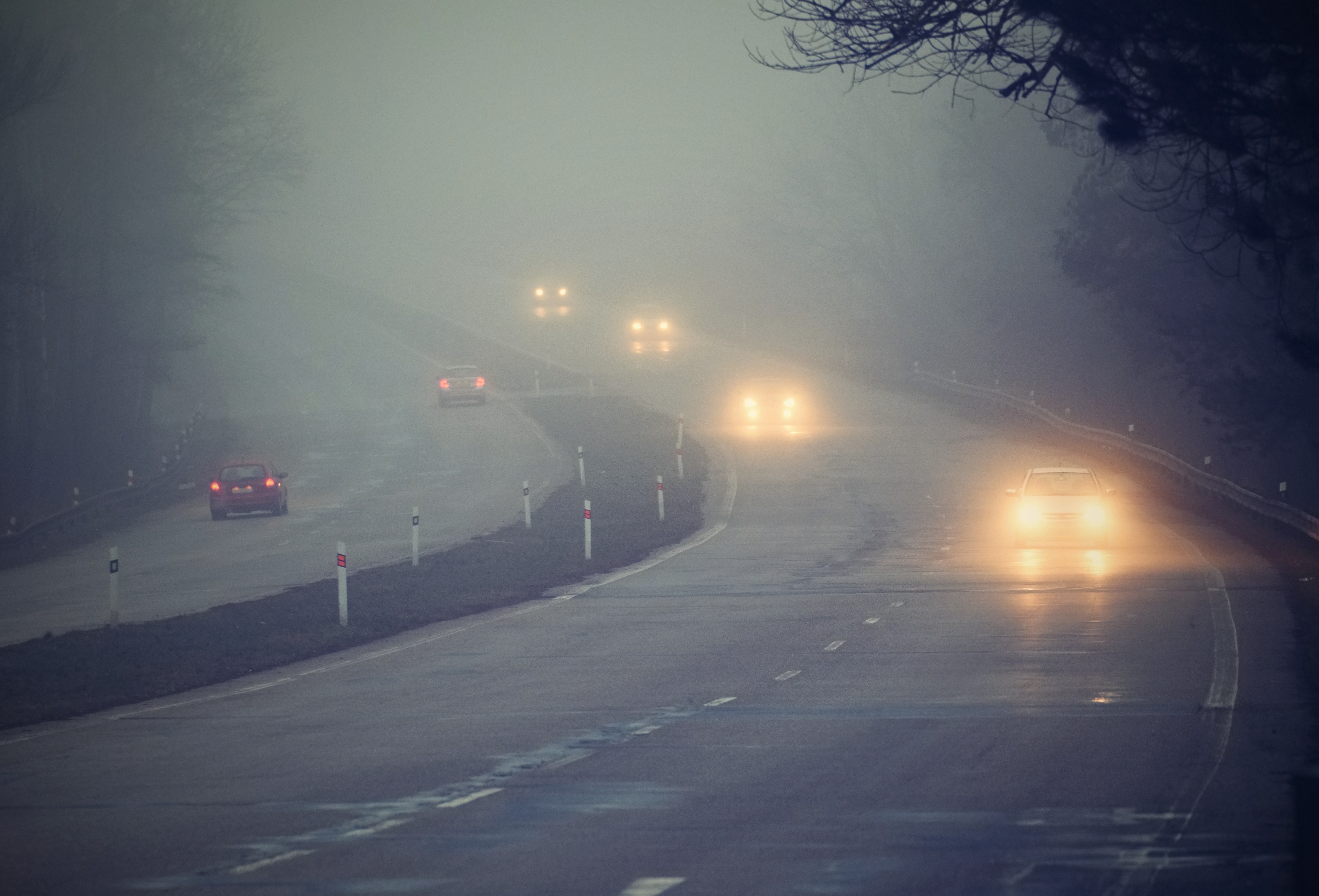Foggy Roads: How To Navigate Danger Zones

Scientists know it as a collection of ice crystals or water droplets suspended in a gas. The rest of us know it simply as fog, the dreamy but potentially dangerous mists that hug lowlands in winter months.
“Road conditions can change rapidly in fall and winter,” said Sgt. John Maxfield of the California Highway Patrol. “Drivers have less time to react and the results can be catastrophic.”
How can drivers help avoid potentially deadly accidents when traveling over foggy roads?
Fog forms on cool long nights near standing bodies of water such lakes, rivers or marshes. Because it lies close to the ground, the condition sometimes is called by colloquialisms such as “valley fog,” “tule fog” or “marsh fog.”
Driving becomes particularly dangerous on freeways such as tractor-trailer accident January 19, 2011 on Highway 287 in Eads, Colorado. The vehicle collided with a median concrete barrier. Colorado State Patrol fingered heavy fog and excessive speed as the culprits.
Similary, Colorado State Patrol attributed speed as the cause of a 20-vehicle pileup April 29, 2005 incident on Interstate 25 near Monument, Colorado. Although visibility dropped to about two feet, some drivers continued traveling at more than 65 miles per hour.
In January 2008, two fog-related accidents shut down a major highway in Wisconsin. In one incident a tractor-trailer rig rammed into the back of vehicles which had slowed to a crawl, reports stated.
In California, about 90 vehicles were involved in a deadly pile-up in 2007 along California’s Central Valley. Fog settled over Highway 99 and reduced visibility to less than 200 yards. According the CHP reports, drivers failed to heed changes in weather and literally set off a chain reaction.
“People generally drive too close to the vehicle in front of them,” said Sgt. Maxwell, who heads up a state program to promote fog awareness. “Drivers need to reduce their speed and increase their following distance.”
Conditions that create deadly fog in California may be found in other states as well. The “fog season” stretches from October through February for most areas of the country.
“Anywhere you have mountains and a valley near water you can get thick fog, especially in the Appalachians,” said David Reynolds, meteorologist for the National Weather Service. “The Hudson River Valley is particularly susceptible to black ice on the roads and ‘ice fog.’ ”
Ice fog, also known as “rime ice,” lingers like fog but turns to solid when it makes contact with a windshield. It is common along the river valleys of New Hampshire, Vermont east of the Ohio River, Florida, North Carolina. It also is found in eastern Oregon, eastern Washington and the high plains of Reno, Nev.
Both Reynolds and Sgt. Maxwell had the following advice for drivers during the “fog” season:
- Extend following distance and reduce speed. This increases your time to react if you suddenly see brake lights.
- Check local weather reports for fog warnings. You should anticipate fog on mild, windless days after a rain.
- Drive with low beams. High beams reflect off the fog and make harder to see. Never drive using only your parking lights.
- Replace wiper blades regularly. Old blades may be cracked and tend to smear rather than sweep the windshield clear.
- Use your windshield wipers and defroster to improve visibility. In some areas you may be able to purchase wiper fluid that acts as a de-icer.
- Watch for traffic signs that display road conditions. “Fog alerts” often are posted in problem areas.
- Carry an emergency road kit with flares in case your vehicle is stalled or disabled.
“Fog-related accidents carry the highest fatality rates,” Sgt. Maxfield said. “Drivers should always plan ahead. Sometimes the best strategy is to exit the roadway and wait until the fog clears.”